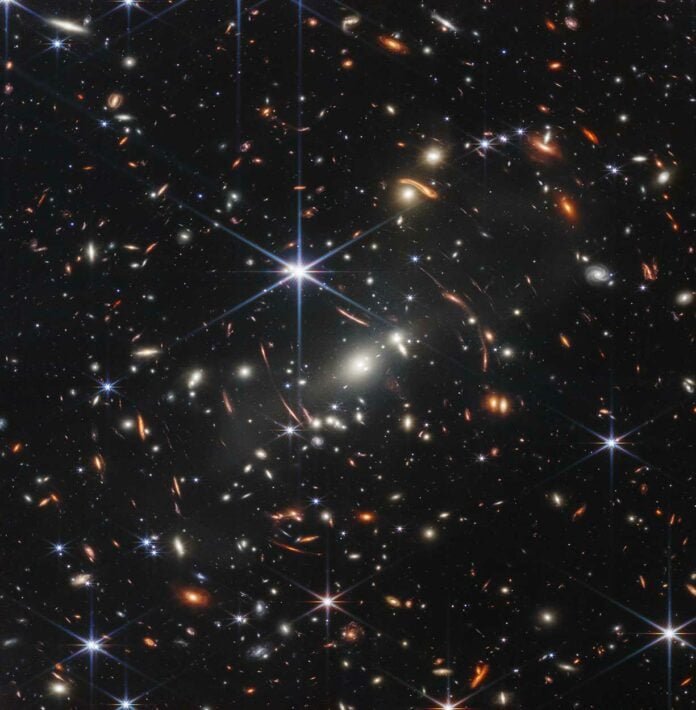NASA has released the first image captured by the James Webb Space Telescope, providing a breathtaking full-colour visual of some of the universe’s earliest galaxies.
The image, known as Webb’s First Deep Field, was unveiled by President Biden as part of a live broadcast, with NASA expected to release a full suite of additional images later today.
Launched December 25, 2021, the James Webb Space Telescope (JWST) reached its final destination on January 24, 2022, and following an amazing unfurling and months of precise alignment, the 18 hexagonal segments that form the telescope’s primary mirror are now beginning to explore the furthest corners of the universe.
This particular slither, known as galaxy cluster SMACS 0723, is deemed the “deepest and sharpest infrared image of the distance universe to date.” The image depicts the cluster as it appeared 4.6 billion years ago, and helping us all appreciate the sheer scale of what we’re seeing, NASA states this section of the universe is roughly the size of a grain of sand, held by someone on the ground at arm’s length.
Conversely, the mass of this gargantuan cluster is such that it bends and warps the light of surrounding objects. Such a spectacle, known as gravitational lens, magnifies distant galaxies whose features have never been witnessed before. The light we’re seeing is thought to have been traveling for over 13 billion years at 186,000 miles per second, while the image itself is a composite of many captured at multiple wavelengths over a period of 12-and-a-half hours.
Though the project hasn’t been without incident – JWST was hit by a micrometeoroid just last month – the $10bn telescope is already exceeding the expectations of astronomers the world over, many of whom are marvelling at the first deep field.
NASA’s next live broadcast, scheduled for 15:30, July 12, is expected to provide a series of further images, including a spectrum of WASP-96b, an exoplanet that is located nearly 1,150 light-years away from Earth.


